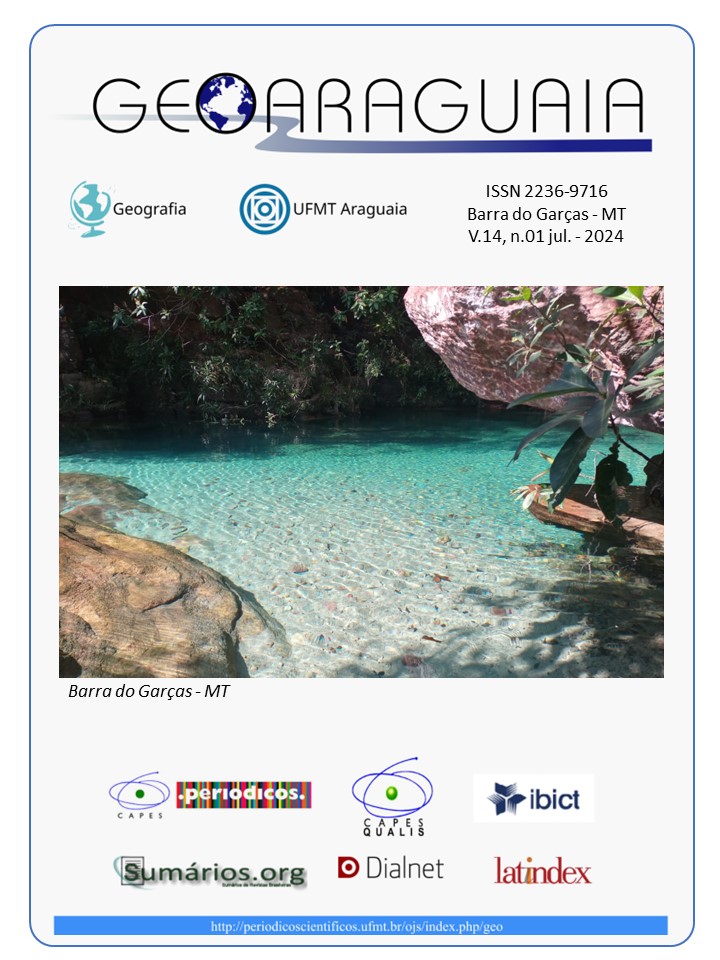Mapping land use and land cover in the Brazilian Cerrado Domains: an unsupervised approach using high spatial resolution Orbital Remote Sensing data (WPM-CBERS-4A) and clustering algorithm (K-means)
Palavras-chave:
Savana Tropical, Cobertura e uso da terra, Sensoriamento Remoto OrbitalResumo
The Brazilian Cerrado is the second largest biogeographic system in Brazil and South America, comprising the most biodiverse savannah in the world. With a high degree of endemism, a remarkable diversity of phytophysiognomies and a complex mosaic of different landscapes, the Cerrado is currently one of the Brazilian ecosystems most profoundly degraded by human activities. It is estimated that, due to rapid changes in land use and land cover, by the year 2022 more than 50% of its natural vegetation cover will have been suppressed to implement other forms of land use, predominantly related to agricultural activities. The aim of this study was to use Digital Image Processing (DIP) techniques on high spatial resolution images from Optical Orbital Remote Sensing, to produce a detailed land use and land cover map of the Ribeirão Paçoca watershed, located in the far north of the state of Goiás, a core area of the Brazilian Cerrado. We used 2 m spatial resolution data from the WPM (Multispectral Camera and Panchromatic Wide - Scan) multispectral sensor system on board the CBERS 4A (China-Brazil Earth Resources Satellite) satellite, georeferenced and orthorectified data for the dry season (July 2023). An unsupervised approach was used, using the K-means classifier algorithm. The results showed that 65% of the study area is used for anthropogenic activities. The areas with natural vegetation cover are restricted to isolated fragments, surrounded by land used for agricultural activities.
Downloads
Publicado
Edição
Seção
Como Citar
Licença
A Revista Geoaraguaia poderá solicitar alterações de ordem normativa, ortográfica e gramatical, com vistas a manter o padrão culto da língua. Se necessário, alguns ajustes normativos podem ser feitos pela revista, porém respeitando o estilo dos autores.
As provas finais não serão enviadas aos autores.
As opiniões emitidas pelos autores dos artigos são de sua exclusiva responsabilidade.





 A revista
A revista